MISSING FROM THE MENU: Nutritious food hard to find on the Northern Cheyenne reservation
Story by Amy R. Sisk
Photos by Sarah VanNortwick
Janelle Timber-Jones had a bowl of organic romaine on the counter and two bags of Lays sitting above the cabinet.
She chopped pineapple for a salad, which would accompany the tilapia fillets baking in her oven. She’s made sure the night’s dinner is low in calories and carbohydrates.
The meal in Timber-Jones’ kitchen is a rarity on the Northern Cheyenne Indian Reservation — a place where fatty, greasy foods often make up breakfast, lunch and dinner. In fact, sugary, carbonated beverages are so popular here that residents have nicknamed the reservation the “soda pop capital of Montana.”
“You can’t sustain a very strict diet for a very long time living in the place we do,” Timber-Jones said.
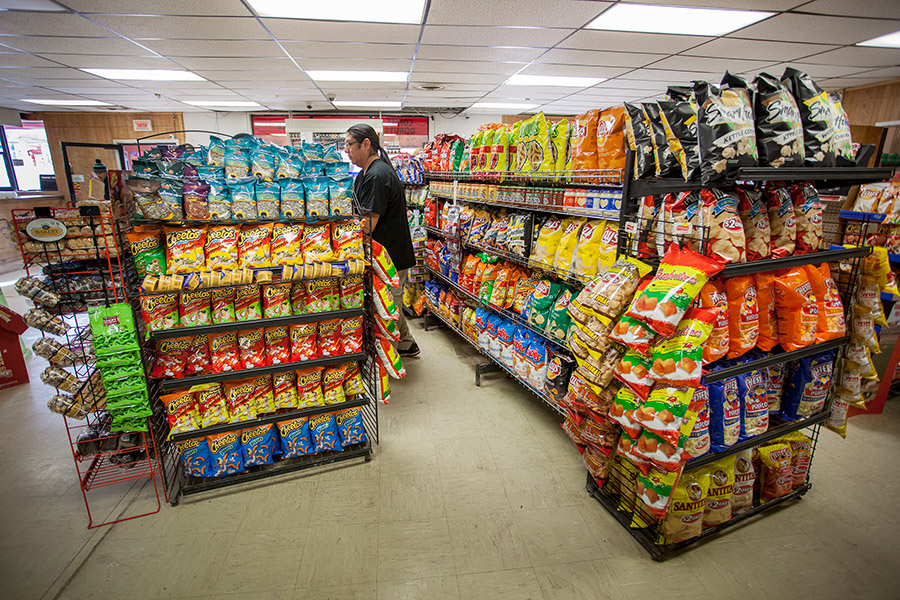 Inside the reservation’s lone grocery store, shoppers find pre-packaged iceberg lettuce in a produce section nestled between a wall of soda and a cooler of processed meat.
Inside the reservation’s lone grocery store, shoppers find pre-packaged iceberg lettuce in a produce section nestled between a wall of soda and a cooler of processed meat.
So, for her dinner, Timber-Jones had to drive two hours west to Billings from her home near Ashland for the dark green leafs in her salad bowl. The only diabetic among the four people in her house, she watches what she eats and makes sure to exercise. But she occasionally allows herself to indulge, in this case, the Lays.
“Potato chips are my downfall,” she said, though she resisted the urge that night.
Timber-Jones lives in a food desert with limited choices for meals other than junk food. While fresh produce is more readily available today than a decade ago to people on the reservation, dense, high-calorie foods are still in high demand. This has helped create a community prone to health problems including obesity and heightened risks of developing diabetes.
Chips and sugary drinks don’t last long on the shelves of the Cheyenne Depot 15 miles down the highway from Timber-Jones’ home.
There’s already a line when the Lame Deer convenience store opens at 6 a.m. on the first day of any given month, the day food stamp and other public assistance money is distributed to hundreds of residents.
On a Friday evening in April, the shelves of the walk-in storage cooler are filled with several dozen cases of soda, juice and energy drinks.
“By Monday, all of this will be gone, and most of the stuff on the floor will be gone too,” general manager Carrie Braine said.
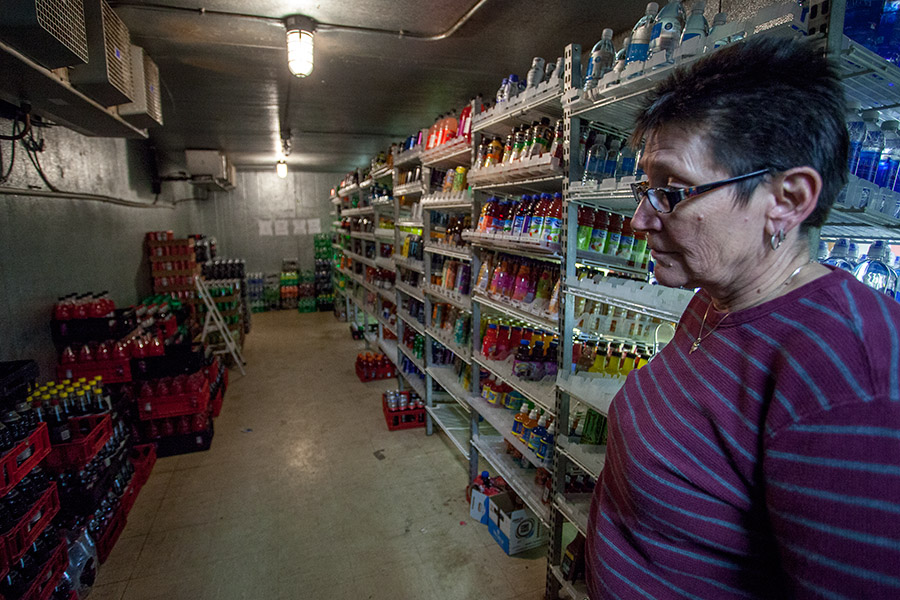 It bothers her that people eat unhealthy food, and it upsets her more knowing her store supplies it. But the Depot offers what people want to eat. She gets after her friends, some diabetic, when she sees them standing in line to buy fried goods from her deli. Yet her scolding does little to change their purchases.
It bothers her that people eat unhealthy food, and it upsets her more knowing her store supplies it. But the Depot offers what people want to eat. She gets after her friends, some diabetic, when she sees them standing in line to buy fried goods from her deli. Yet her scolding does little to change their purchases.
As Braine walked past the deli, she rubbed her finger across the glass window.
“It’s pretty nasty in here,” she said to the worker cleaning the case.
The grease came from the nearby vat of canola oil bubbling around a few dozen chicken tenders.
Braine made her way deeper into the kitchen, stopping at the vat of oil to explain that she receives shipments of frozen chicken and other finger foods from a Sysco distributor in Billings.
“Those are my favorite,” she remarked, pointing to the thin strips of chicken bobbing in the grease.
Before she took over the store two years ago, she could count on two hands the number of times she entered the Depot each year. Now she eats her deli’s greasy food daily.
She has tried, with little success, to sell healthier items like the low-calorie Special K Cracker Chips sitting next to the deli’s soda machines.
“It came down here and it sat and it sat,” she said. “Nobody would touch it.”
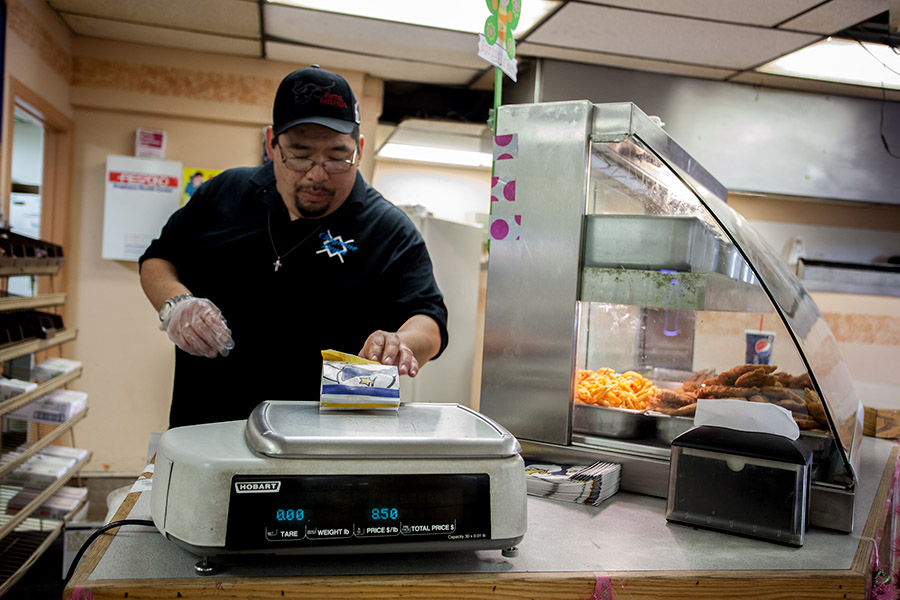 Instead, people go for the Lays or Doritos, and they go fast.
Instead, people go for the Lays or Doritos, and they go fast.
When Braine first took over the store in 2012, she put liter bottles of soda on sale for $1 and marked bags of chips down to $1.19. The sale was so successful that she made enough money to bring in an entire truck full of chips and soda.
When the low-calorie cracker chips wouldn’t sell, she tried the same tactic. But even by reducing the price from $1.49 to $0.50, many of the bags sat in the same basket months later. And though the $0.50 string cheese packages are among the cheapest items in the store, few make their way to the checkout counter.
Braine hopes to add other healthy items like salads and deli sandwiches. But her first priority is to upgrade her checkout system and back office before she can focus on searching for a distributor.
Bringing in nutritious lunch foods offers an alternative to the deli’s grease, but it’s a gamble for business. Braine does not know whether those items would be any more popular than the cracker chips or string cheese.
It’s a similar situation across the street at the Lame Deer Trading Post, the reservation’s only grocery store. A few years ago, the business put up tags to identify diabetic-friendly foods only to find that sugar-free cakes and syrup remained on the shelves.
When co-owner Donna Hurff brought in organic produce, she realized her clients did not know what organic meant.
“Those things just sat. They picked around it. They wouldn’t buy it,” she said. “I thought well maybe because they’re not educated, they don’t know what organic is. Who’s showing them that organic is better for you because it doesn’t have all the pesticides and poisons in it?”
 She tried again several years later, thinking people might be more familiar with the term “organic.” Yet again, the organic fruits and vegetables, which have a shorter shelf life than conventional produce, started to rot.
She tried again several years later, thinking people might be more familiar with the term “organic.” Yet again, the organic fruits and vegetables, which have a shorter shelf life than conventional produce, started to rot.
The trading post recently finished a renovation to add an additional 5,000 square feet. The produce section is now larger, and when customers walk in, they are greeted by a small display of bananas, melons and vegetables.
“I see the green peppers right there, and I know I’d better grab one,” said Timber-Jones, the woman who tries to eat healthy in her Ashland home.
She works in Lame Deer for the Office of Public Instruction and drops by the trading post several times a week to pick up veggies or soup for lunch. Before she purchases an item, she makes sure to read the label. If there’s sugar, salt or fat in the first three ingredients, the item won’t make it into her cart.
Marcia Roper spends every two weeks on the Northern Cheyenne reserva tion trying to get more people to select food as carefully as Timber-Jones.
The California-based nutritionist has split her time between her home state and the reservation’s Wellness Center for the past six years. She devotes two weeks a month to meeting with residents and helping them brainstorm ways to get their diabetes and weight under control. Native Americans are more than twice as likely to have diabetes than white people, according to the U.S. Department of Health and Human Services.
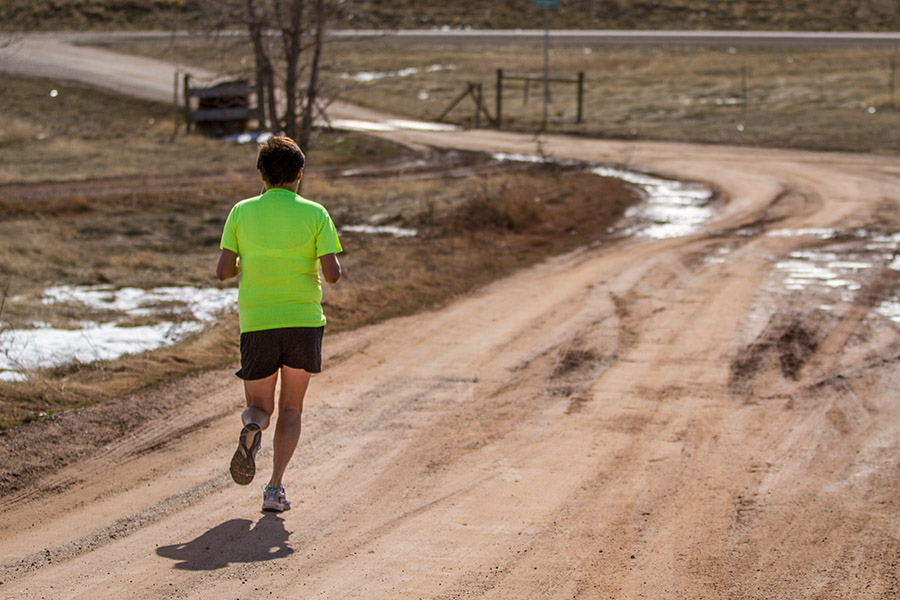 Inside her Lame Deer office, she works alongside diabetes specialists to promote her Healthy Plate Program. She frowns at using medication to treat diabetes. Insulin and pills can cause more harm than good, she said. Instead, she encourages patients to carefully monitor serving size and balance proteins, carbohydrates and non-starchy vegetables.
Inside her Lame Deer office, she works alongside diabetes specialists to promote her Healthy Plate Program. She frowns at using medication to treat diabetes. Insulin and pills can cause more harm than good, she said. Instead, she encourages patients to carefully monitor serving size and balance proteins, carbohydrates and non-starchy vegetables.
Tammy Roundstone, diabetes coordinator at the Wellness Center, said 11 percent of the reservation’s 5,000 people have been diagnosed with diabetes. That’s not as alarming as elsewhere in the country like southern Arizona where the diabetes rate for Pima Indians hovers around 50 percent, according to the National Institutes of Health. But the rate on the Northern Cheyenne Indian Reservation does not take into account people who have not been diagnosed.
As Native Americans adopted western lifestyles, obesity and diabetes became more frequent, according to research by Dorothy Gohdes, MD, published in “Diabetes in America,” a National Institutes of Health collection of medical reports on the disease. People on reservations began to consume more fat when they stopped gathering food through hunting and farming, and motorized vehicles and sedentary jobs have not helped matters.
Through screenings and education programs, Roundstone and the other seven people who work at the Northern Cheyenne Wellness Center try to identify individuals with diabetes or prediabetes, which occurs when a person’s glucose level rises but not high enough to indicate diabetes.
Since the center opened in the early 2000s, she has seen the number of people on the reservation who maintain control over the disease double to 45 percent.
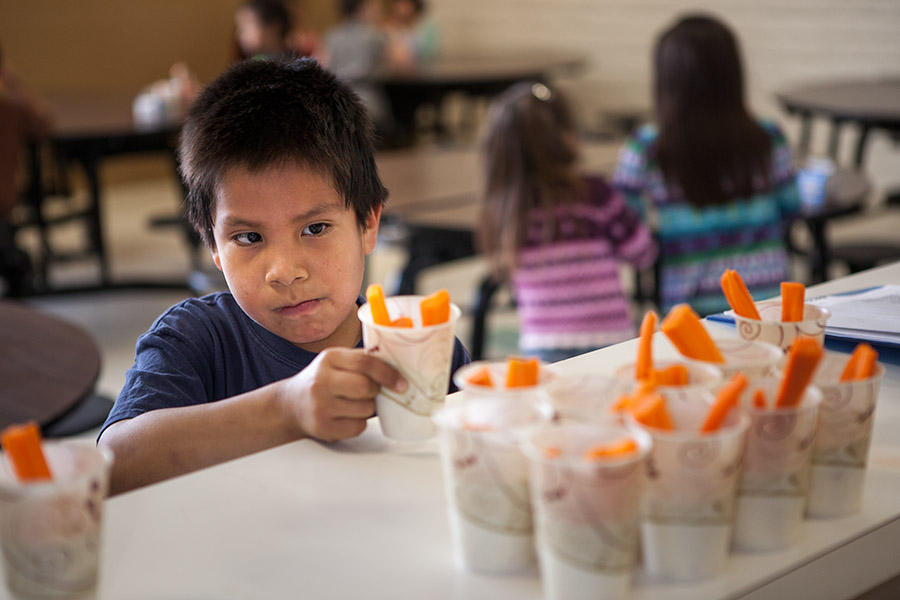 Roper, the nutritionist, spent the month of April promoting her Healthy Plate Program in the Lame Deer Trading Post. She placed tags next to items like nutrient-rich vegetables and other healthy foods. The Wellness Center staffers are hopeful that by offering tours of the grocery store, people will make healthier purchases.
Roper, the nutritionist, spent the month of April promoting her Healthy Plate Program in the Lame Deer Trading Post. She placed tags next to items like nutrient-rich vegetables and other healthy foods. The Wellness Center staffers are hopeful that by offering tours of the grocery store, people will make healthier purchases.
Some residents on the reservation prefer to shop in Billings where food is cheaper than rural grocery stores. Roundstone believes the tags and tours will pay off for them there as well.
“We can still show them what they can mix and match to make a healthy meal,” she said. “They can take what they learn to Walmart or wherever they shop.”
It is possible for people to eat healthy regardless of where they obtain food, Roper said. Officials on the reservation estimate that three-quarters of people living there receive food assistance, either through food stamps or commodities.
The commodity program provides food to low-income Native Americans free of charge through the U.S. Department of Agriculture.
In Lame Deer, 526 people stopped at the commodity distribution center warehouse in March to pick up their allotted canned and boxed goods, said Linda Freeman, director of the Food Distribution Program on the Northern Cheyenne reservation. They can select items like frozen beef and chicken from the freezer, or bulk beans, and cans of beef stew or peaches stacked in cardboard boxes on top of pallets.
She said the USDA has gradually improved the nutritional value of its commodity food, much to the dismay of some residents.
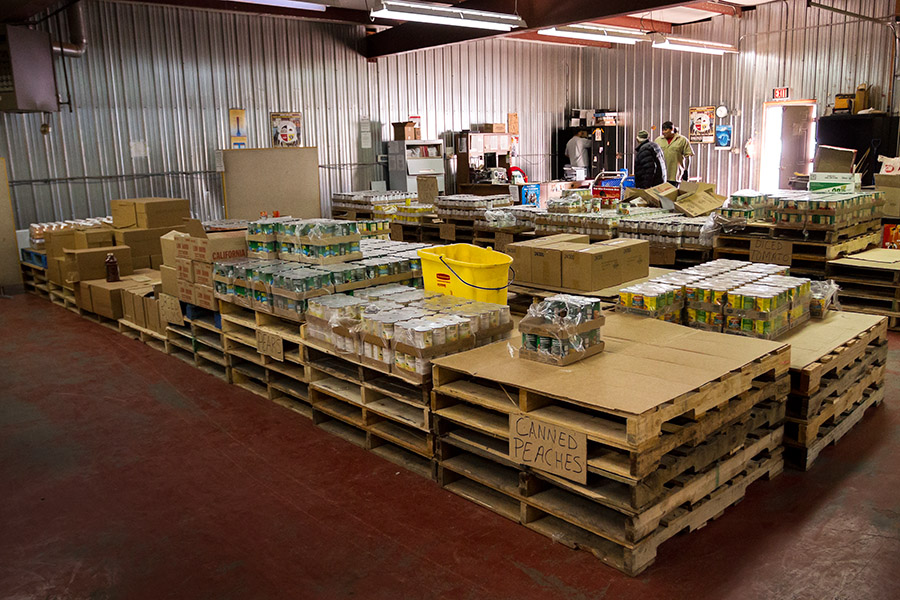 People living off commodities can still maintain a healthy diet if they work at it, Roper said. The greatest impediment she sees to accessing healthy food on the reservation is a lack of jobs. Well over half the residents are unemployed. Having a regular paycheck would allow people to purchase food and go a long way toward increasing individuals’ happiness and self-worth, she said.
People living off commodities can still maintain a healthy diet if they work at it, Roper said. The greatest impediment she sees to accessing healthy food on the reservation is a lack of jobs. Well over half the residents are unemployed. Having a regular paycheck would allow people to purchase food and go a long way toward increasing individuals’ happiness and self-worth, she said.
Stress, as well as caffeine, present major barriers to losing weight, and they are both prevalent on the reservation, Roper said. In particular, deaths of family and friends can wreak havoc on a person’s physical health, especially if that person has type 1 or type 2 diabetes.
That’s what Timber-Jones believes led to her diagnosis 20 years ago. She had started to lose energy and didn’t know why, so she visited the reservation’s Indian Health Services clinic. The doctor informed her that her blood sugar had spiked to a number eight times the recommended level, and she was immediately hospitalized. Several months later, she was diagnosed with type 1 diabetes. Her pancreas, which produces insulin necessary to allow sugar to enter cells, had stopped functioning.
Several of her family members also had diabetes, but she’s certain genetics are not the only factor contributing to her diagnosis. Within a short period of time, she had gotten divorced, lost a sibling and grandmother, and her stepmother suffered a massive stroke. The stress was eating away.
“Holistically, you have emotions, your spiritual peace, your physical peace — and all of those things play a part in your body,” she said. “It was a perfect marriage to have that happen to me.”
She ran three miles a day prior to her diagnosis and kept running afterward, competing in several marathons. The medals she keeps in her bedroom showcase the high points of her fight to stay healthy, but she hasn’t always felt like gold.
Her house burned to the ground in the summer 2012 Ash Creek fire, and several people close to her died around the same time. In the year that followed, she lost sight of maintaining a healthy diet and workout regimen, gaining 25 pounds.
“When you are depressed, you don’t really want to get up and chop veggies,” she said.
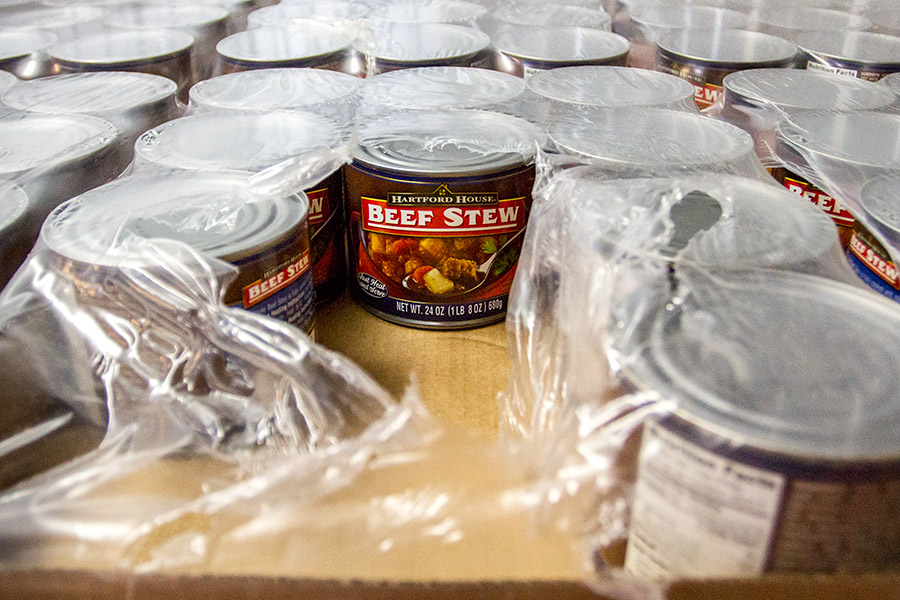 She found her stride again in February, as well as a new natural foods store in Billings with organic apples, pears and pistachios that sat on her kitchen table. Nearly every day, she pulls on her tennis shoes and puts in her earbuds before setting out for a jog across the grassy flatlands.
She found her stride again in February, as well as a new natural foods store in Billings with organic apples, pears and pistachios that sat on her kitchen table. Nearly every day, she pulls on her tennis shoes and puts in her earbuds before setting out for a jog across the grassy flatlands.
With few options for entertainment, people on the reservation watch a lot of TV, she said. Time and time again, they get bombarded with ads for highly processed food.
“People are willing to run out and try it,” she said. “We know sugar is addicting. Sugar is in almost everything. So if they try something new and it has sugar in it and they are already addicted, guess what?”
That often happens when people drink soda, something Lame Deer resident Barbara Braided Hair was reminded of this spring when a neighborhood boy visited her home. When she asked the boy if he would like some water, he eagerly said yes. All his mother had been giving him was Dr. Pepper.
This horrified Braided Hair, who grew up with her grandmother’s cooking along the Tongue River in Birney. Her grandmother prepared dishes from processed commodity cheese and canned fruits and meat, but Braided Hair likes to remember the items she helped gather: fresh caviar and trout from the river.
“We can only eat so much because we need to let them grow,” her grandmother would tell her as she prepared the fish. “That way they will be plentiful next season.”
Before “organic” became a buzzword, Braided Hair helped her grandmother harvest berries and vegetables, both pesticide free, from the garden next to the house. Food, her grandmother said, holds spiritual meaning for the Northern Cheyenne.
“When we prepared food, my grandmother would say, ‘You can’t have bad feelings. If you had a bad day, things didn’t go well, let that go and pray about it. As you prepare food, the feeling goes into the food,’” she said.
 Braided Hair’s grandmother encouraged her to teach her children to pray, so she did.
Braided Hair’s grandmother encouraged her to teach her children to pray, so she did.
On a recent afternoon, Braided Hair sat in the break room of the First Interstate Bank, located across the street from the Lame Deer Trading Post. She had just come from the grocery store and set up a lunch of strawberries, blackberries, raspberries, carrots, broccoli and iceberg lettuce salad.
The bank manager bowed her head and asked — in the native Tsehesenestsestotse tongue — for the spirits to come, and she thanked them for the blessings of food and nourishment.
There was no soda at the table. She has sworn it off.
Drinking soda in a social setting is akin to ordering beer at a bar, she said. It’s so embedded in the Northern Cheyenne culture that guests show up with a case of Pepsi or Mountain Dew at every baby shower and birthday party.
Her daughter, Jessica, recalled her high school days a decade ago when students thought nothing of downing “Big Slam” liter-sized bottles of soda. When she first met her boyfriend and his family, she noticed they also drank far too much of the sugary concoction.
“I said, ‘We need water,’ so now we’re both trying to change that,” she said. “If we didn’t do that, they would just drink pop every single day.”
Barbara Braided Hair has talked to Timber-Jones about starting a co-op to provide items like fresh veggies, soups, kombucha — a fermented black tea drink — and other exotic foods for people to try. But that’s a pipe dream for now.
“I would love to see that, and I have been praying for it,” she said. “If you pray for something good for the people, you have to be patient because it might not come tomorrow or next year or in 10 years, but it will be here.”
Thanks to a new greenhouse, the Boys & Girls Club in Lame Deer is trying to grow its own food to feed the community. A hundred children hang out there every day after school, doing crafts, playing games and eating snacks like carrots with ranch dip and milk. Because so many of the children come from low-income families, the club gets reimbursed for the money it spends on snacks through the USDA, provided those snacks are healthy.
“When we prepared food, my grandmother would say, ‘You can’t have bad feelings. If you had a bad day, things didn’t go well, let that go and pray about it. As you prepare food, the feeling goes into the food,’”
In April, the kids took their milk cartons into the crafts room, where they reused them as temporary pots to plant vegetables. The plants will be moved to the greenhouse to continue growing throughout the summer.
“We would like to have enough produce to provide a meal,” said Lanita Haugen, unit director for the Boys & Girls Clubs in Lame Deer and Ashland. “We would like the kids to invite their families and have a dinner, and introduce them to what the Boys & Girls Club has done.”
Last year, the club ran a diabetes education program to encourage children to exercise and eat healthy, and the lessons stuck. The kids were so excited about adopting new eating habits that some started asking their parents to buy better food.
“Having parents share that with us shows that they were paying attention,” Haugen said.
Whether kids teach their parents or adults pass the message on to their children, no one expects a reservation-wide shift to a healthy diet overnight.
- Floyd Bearing, the financial manager of the Cheyenne Depot, restocks one of the cases of chips at the largest convenience store on the reservation. “Chips, chips, chips,” said Kay Medicine Bull when asked about the most popular food on the Northern Cheyenne Indian Reservation.
- Mac Cooper, an employee of the Cheyenne Depot, weighs chicken strips for a customer. The Depot is the only gas station and the larger of two convenience stores on the Northern Cheyenne Indian Reservation. Fried foods are popular on the reservation.
- Janelle Timber-Jones lives in Ashland on the rural Northern Cheyenne Indian Reservation. She tries to stay fit and curb her diabetes by running as often as the weather permits.
- Barbara Braided Hair, 50, prepares a healthy lunch of food she purchased at the Lame Deer Trading Post, the only grocery store on the reservation. Braided Hair treated her family to lunch while at her work at the First Interstate Bank in Lame Deer.
- The Lame Deer Trading Post is the only grocery store on the Northern Cheyenne Indian Reservation.
- People who qualify for the commodity food program choose food for their families at the distribution center. Unfortunately, the food is sometimes not enough to last through the month.
- Tribal members on the Agriculture Department’s Food Distribution Program pick up their food allotment at the Food Distribution Center on the Northern Cheyenne Reservation. In March, 526 people picked up commodity rations from the program, which serves low income Native Americans.
- “I hate carrots,” says 6-year-old Max Littlebird as he reaches for a healthy snack at the Boys & Girls Club of the Northern Cheyenne Nation. The club’s food is funded by a program that requires it to serve healthy foods to kids, such as carrots with ranch dressing.
- Carrie Braine, general manager of the Cheyenne Depot, says she restocks the soda often. The store also keeps extra bottles in the back of the walk-in cooler.
- A small cold case of produce and a section of bananas and peppers at the Lame Deer Trading Post are the only fresh produce sold on the Northern Cheyenne Indian Reservation.
 Native News Project 2014 | School of Journalism – University of Montana Native News Project 2014
Native News Project 2014 | School of Journalism – University of Montana Native News Project 2014


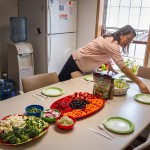

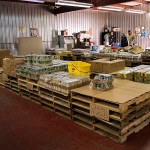
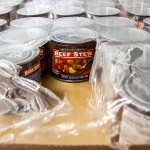





Recent Comments